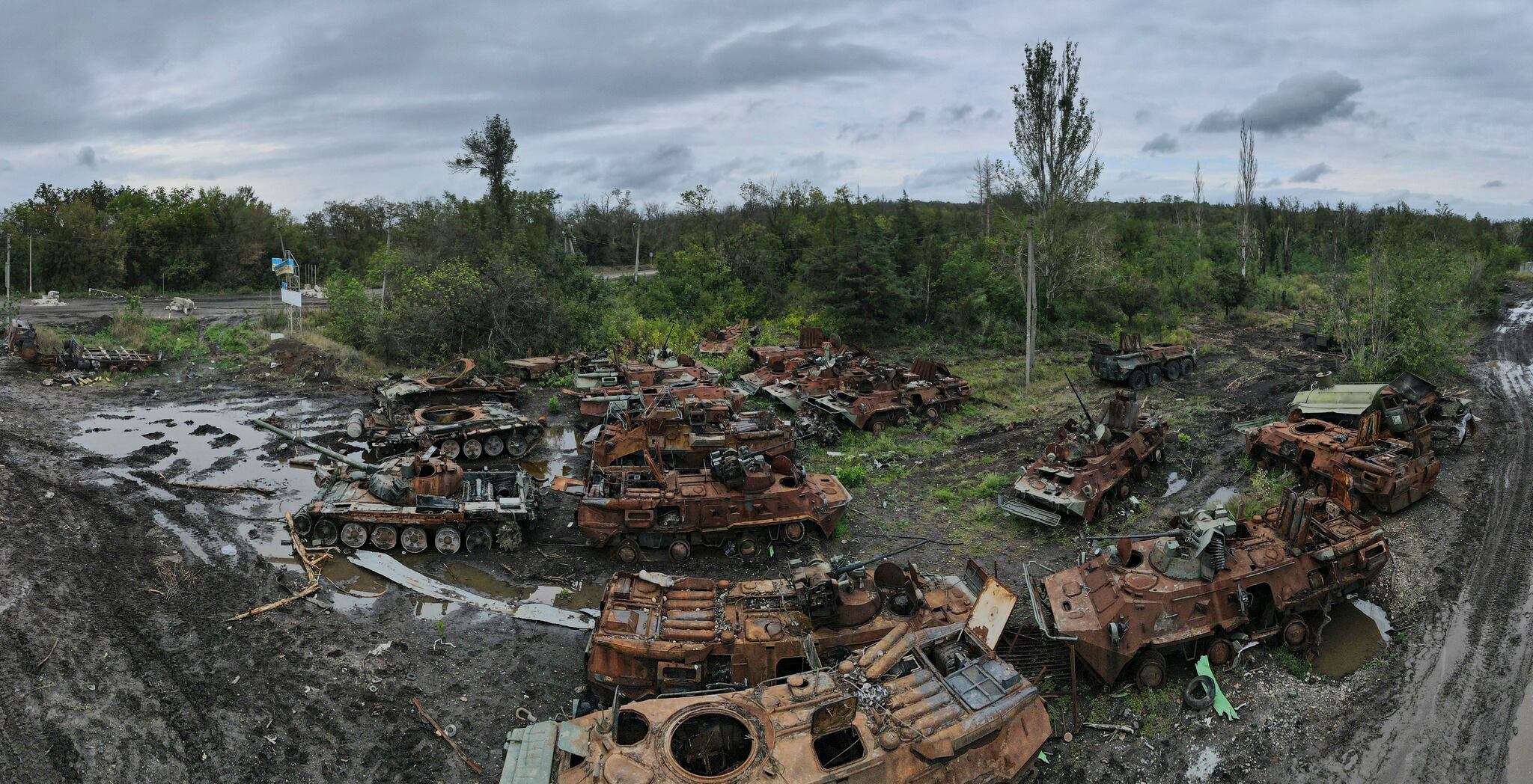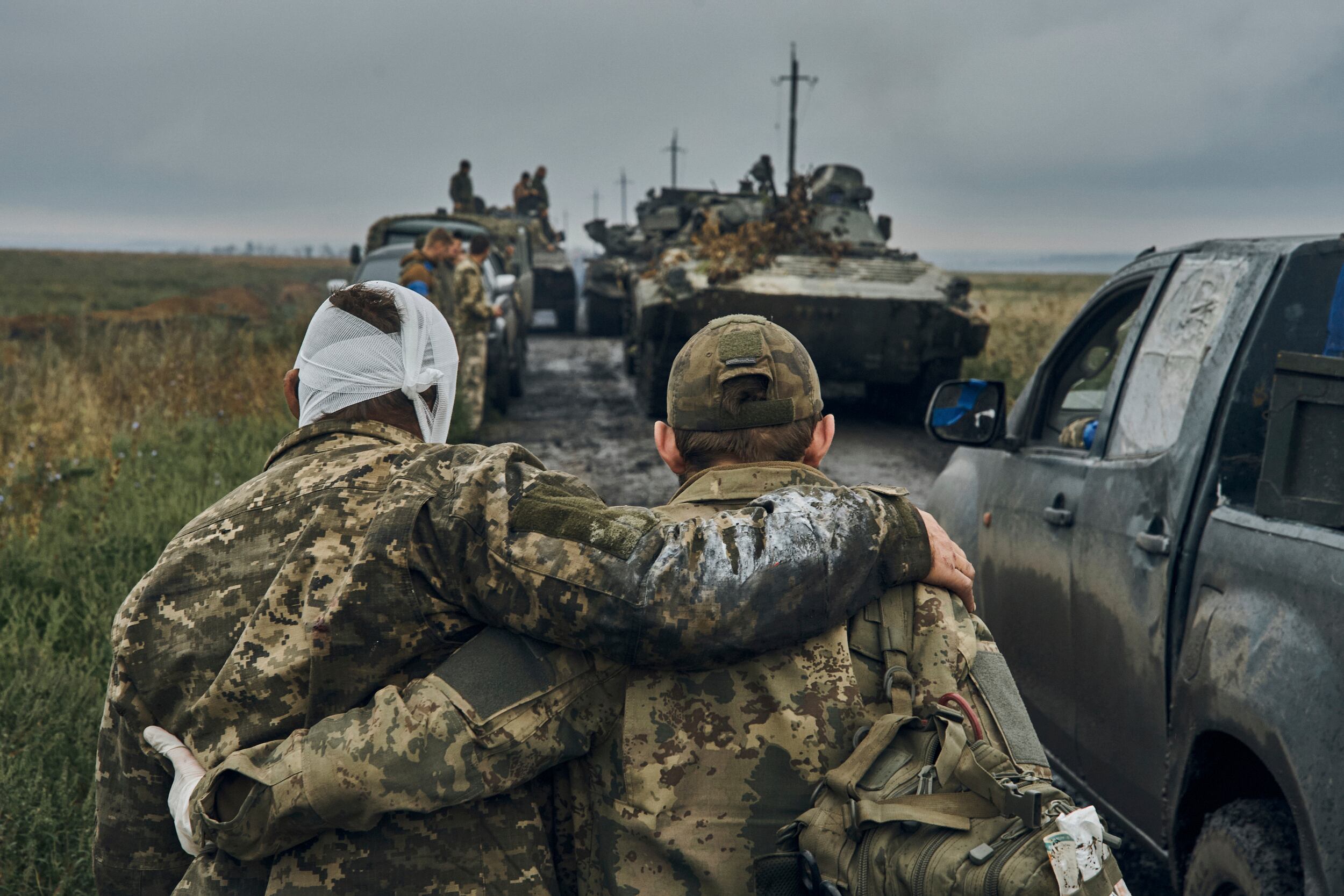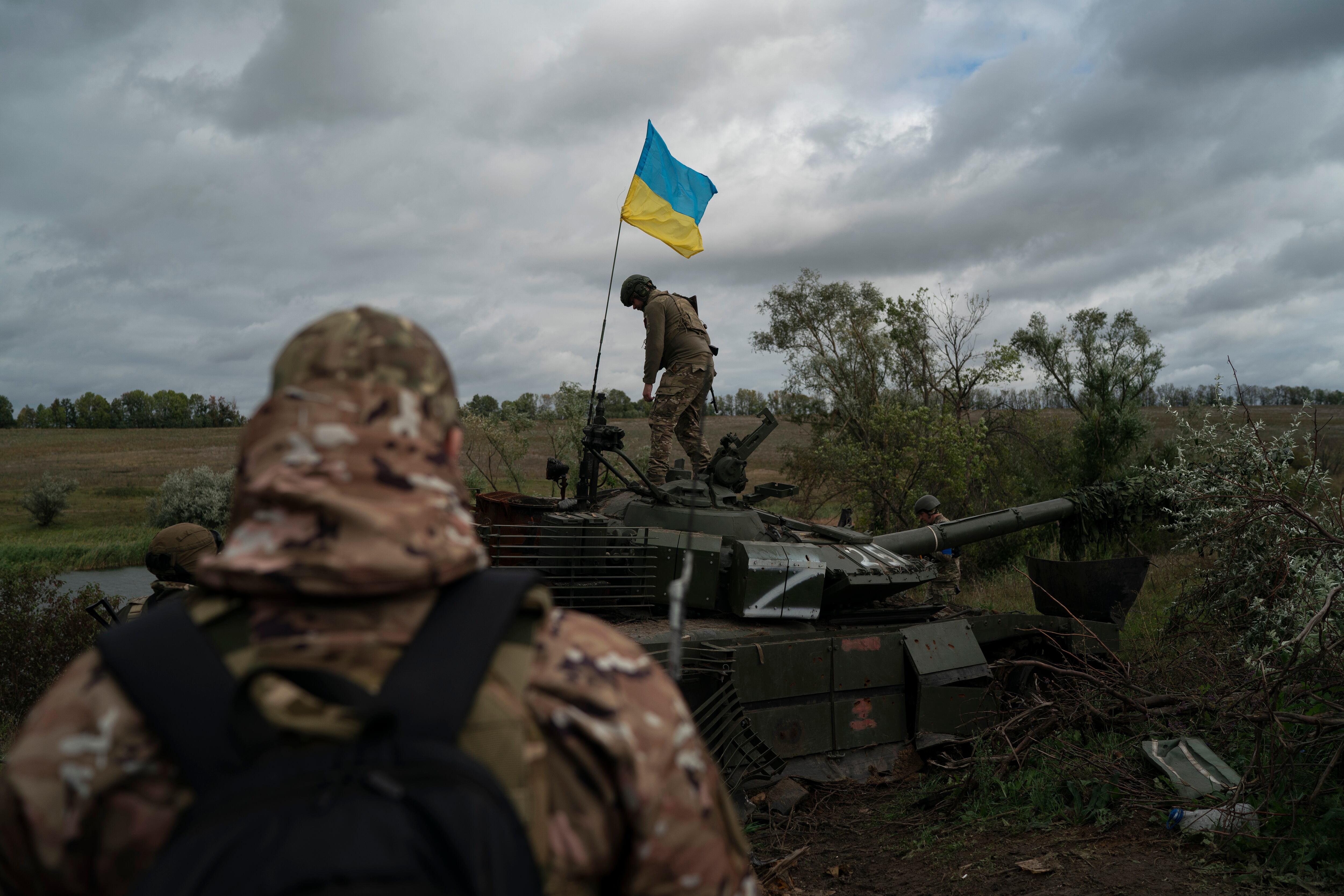IZYUM, Ukraine —Standing on Liberation Square in the city of Kharkiv, Ukrainian military officer Antolii Sidorenko looks the part of a special operations commander, with a long beard, shaved head, and a pistol on his hip.
In person, he’s hardly the stereotype of the gruff special operator. Speaking with Military Times on a night made darker by the frontline city’s blackout, Sidorenko was relaxed and easy-going, recounting how as a child he’d visited the Arizona town of Apache Junction.
Sidorenko, the commander of the Azov special forces unit in Kharkiv, is now savoring Ukraine’s recent victory over Russia in the nearby region, which Russia had occupied since nearly the start of the war seven months ago.
Armed with Belgian-made SCAR-L rifles, night vision, and thermal vision equipment, Sidorenko’s men laid the groundwork for this victory by slipping deep into Russian-held territory in the months leading up to the assault, he said.
On some of these trips past enemy lines, they were able to mine Russia’s likely routes of retreat. When Ukraine’s lightning fast assault sent Russians fleeing backward, “lots of their equipment blew up,” Sidorenko said.
The Azov battalion is a unit of Ukraine’s military but began life as a ultranationalist volunteer militia in Ukraine’s 2014 war with Russian-backed separatists. While the unit’s insignia remains a Wolfsangel, a symbol used by Nazi Germany, Western analysts have said the unit has purged its more extremist elements under pressure from Ukraine’s government. The unit is now widely celebrated in Ukraine for its tenacious defense of the Azovstal steel plant in the city of Mariupol.
The Ukrainian military’s liberation of Kharkiv is a significant victory, and arguably a historic victory in the annals of modern warfare. Ukraine’s offensive rolled Russian positions back across 2,317 square miles of territory in just seven days, according to statements by Ukrainian President Volodymr Zelensky on Sept. 13.

It also liberated thousands of Ukrainians trapped under Russian rule while capturing large quantities of Russian equipment. Military Times saw multiple armored vehicles strapped to flatbed trucks streaming back from the front line along shell-pocked highways throughout the last week. Among the equipment taken was the first-ever captured Russian Orlan-10 drone and sensitive artillery fire-control systems, according to Ukrainian media reporting.
Ukraine’s success against Russia, which was ranked by conflict research institute SIPRI as among the top five military spenders globally as recently as last year, was hardly a fluke. Russia’s poor preparation, Ukraine’s use of precise Western weapons, and an accurate intelligence picture were all factors in Ukrainian success, according to military analysts, liberated civilians, and an interview with Sidorenko.
No defenses, poorly prepared militia
Russia appears to have been ill-prepared for Ukraine’s assault.
Once Ukrainian forces punched through Russia’s first defense line, there was nothing to stop them from going as far as they could. “They probably didn’t think a counter-offensive would happen because they didn’t have a second or third line of defense,” Sidorenko said, his surprise evident in his tone.
Russia also appears to have poorly prepared forces in the area, according to military analysts and testimony from locals.
Russian military movements prior to the offensive indicate they may have believed that Ukraine’s main attack would be against Russian-occupied Kherson in Ukraine’s south. Russia had moved troops away from Kharkiv, thereby weakening their positions.
The remaining Russian troops seem to have consisted primarily of poorly prepared militia units.
Civilians interviewed near multiple locations in Balakliya as well as documents seen by Military Times in Izyum, another town, indicated that the area was staffed by units from the Luhansk People’s Republic, known as the LNR, a Russian-backed break-away region carved out of Ukraine in 2014.
LNR units were poorly staffed and supplied, according to statements from townspeople and villagers.

One resident spoke of LNR personnel wearing a mix of civilian clothes and uniforms, while another said she had seen an under-age teenager in their ranks. Fighting positions in multiple places were reinforced by cement bags looted from a nearby factory.
Residents’ comments are in keeping with many military analysts’ views, like those of the Philadelphia-based Foreign Policy Research Institute, that these forces are poorly trained, supplied, and plagued by low morale.
The chaotic and disorganized nature of the LNR units’ flight is evident throughout the region. At one artillery camp in the woods near Balakliya, a town in Ukraine’s Kharkiv region, one truck stood burned out while another was abandoned intact. At two Russian bases visited in the city of Izyum and the village of Savintsi, Russian soldiers even left behind helmets and body armor.
Good gear
Western weapons also played a role, according to Western analysts and the Azov officer, Sidorenko.
Western aid was “essential” to Ukrainian battlefield successes, according to commentary by Mary Glantz of the United States Institute of Peace, a government-funded research institute. U.S.-provided long range artillery such as the High Mobility Artillery Rocket System was particularly key in destroying Russian logistics and command points, Glatz wrote.
On a picturesque riverside street in Balakliya, a crater dead center of a charred house bore witness to the accuracy of Ukrainian strikes. Neighbors reported that Ukrainian forces pulled the bodies of four Russian officers out of the wreckage after the Ukrainian strike, which shattered only the glass in houses standing just meters away.
Sidorenko likewise called out Ukraine’s use of U.S.-supplied HIMARS rocket launchers as key to destroying Russian command and control points.
Even after Ukrainian lines had solidified, many small groups of trapped Russians were surrendering.
”They were deployed on a mission somewhere, without communications” returned, and were shocked when they realized they were surrounded by Ukraine’s army, Sidorenko said.
Missions behind enemy lines
Western weapons and weak Russian positions, though, are only part of the story.
Ukraine’s ability to keep Russia on the backfoot, hurling strikes on them as they stumbled back to their pre-invasion lines was in part the product of precise intelligence supplied by Western governments, daring Ukrainian missions past enemy lines, and information relayed by Ukrainian partisans and civilians.
Sidorenko recalled how surprised he was when Ukraine dramatically exceeded its goals on the first day of conflict. Ukraine’s military machine was able to keep going because their high quality intelligence meant they were immediately able to select new targets.

The U.S. provided extensive intelligence and assistance, according to news reports, which even included tabletop exercises with Ukraine’s military in order to game out various options.
Ukraine didn’t just depend on Western intelligence. Thanks to commando raids past enemy lines and the bravery of Ukrainian civilians it also had on-the-ground information.
Anatolii and Ruslan, two Ukrainian citizens from a village near Balikleia, told Military Times that they would relay Russian military coordinates to Ukraine’s military. Ruslan said he used secure messaging app Signal to do this.
Messaging innovations like Signal could not always be relied on, according to Sidorenko. The Ukrainian commander said that near Volchansk, an occupied town near the Russian border, the Russians shut off the internet and forced communications through a cell provider so that they were able to monitor the calls.
Ukraine’s success did not come without a cost.
Sidorenko said he’s seen a slight worsening of morale in the days following the assault as Ukrainian forces battle to de-mine the enormous territory they’ve taken back from Russia. In the village of Savintsi, a woman named Nataliya said that one sapper had died in the line of duty.
Drones are also a threat, including what Sidorenko said was a new kamikaze drone from Iran whose deadly effectiveness was only alleviated by the moped-like sound that its engine made. Although Sidorenko did not name the drone, it is likely the Shahed-136, according to recent news reports.
Still, when asked how high the Ukrainian military’s morale is, the commander pointed to the sky, saying, “It’s somewhere up there.”
Sam Skove is a Kyiv-based freelance journalist from the United States. His work has appeared in Radio Liberty, Newsweek, and The Center for European Policy Analysis.




